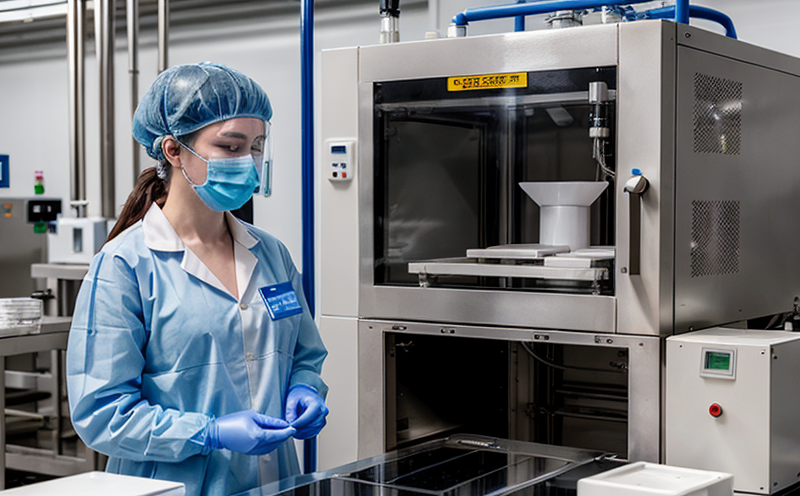GMP Media Fill Simulation Testing
In the pharmaceutical industry, compliance with Good Manufacturing Practice (GMP) regulations is paramount. GMP ensures that medicines are produced and controlled to high standards of quality and safety. Among the various GMP compliance testing procedures, media fill simulation stands out for its critical role in validating production processes before actual drug product introduction.
Media fill simulation involves filling containers with a sterile solution similar to the final drug product without introducing active pharmaceutical ingredients (APIs). This process simulates the manufacturing environment and helps identify potential issues that could arise during large-scale production. The goal is to ensure that the equipment, processes, and personnel are capable of producing consistent quality products.
The testing ensures compliance with regulatory requirements such as those outlined in ISO 14644-1 for cleanroom classification, which impacts the sterility assurance level (SAL) necessary during media fill. This is especially important when dealing with sterile products like injectables and ophthalmic solutions.
During a media fill simulation, it's crucial to replicate as closely as possible the conditions of actual drug production. This includes using appropriate packaging materials, simulating filling operations, and ensuring that all equipment functions correctly under these conditions. The process also involves monitoring critical parameters such as temperature, humidity, pressure, and cleanliness levels.
The results of media fill simulations are used to evaluate the performance of cleanroom environments, validate aseptic processes, and demonstrate adherence to GMP standards. By identifying any shortcomings early in the development or production cycle, companies can take corrective actions before they affect patient safety or product efficacy.
The FDA's 21 CFR Part 210 and Part 211 provide specific guidelines for media fill simulations, emphasizing thorough documentation and validation of all processes. Compliance with these regulations is essential to maintain the integrity of pharmaceutical products throughout their lifecycle.
Media fill simulation testing also involves rigorous quality assurance checks at various stages. This includes pre-fill inspections, aseptic filling procedures, post-fill audits, and final equipment cleaning verification. Each step must be meticulously documented to support regulatory compliance and ensure product safety.
Applied Standards
| Standard | Description |
|---|---|
| ISO 14644-1:2015 | Cleanroom and associated controlled environment design specification - Part 1: Cleanrooms and related controlled environments. |
| ISO 14648:2017 | Evaluation of microbiological airborne contamination in cleanrooms and other controlled areas. |
| ASTM E2583-14 | Standard practice for aseptic processing of pharmaceutical products. |
Customer Impact and Satisfaction
- Reduces the risk of contamination during large-scale production runs.
- Ensures that all equipment functions correctly under real-world conditions, minimizing downtime.
- Avoids costly recalls and product withdrawals due to manufacturing defects.
- Supports timely compliance with regulatory bodies like the FDA and EMA.
- Improves overall product quality by identifying and resolving issues early in development.
International Acceptance and Recognition
GMP media fill simulation is widely recognized and accepted across the global pharmaceutical industry. Regulatory bodies such as the FDA, EMA (European Medicines Agency), and WHO (World Health Organization) recommend this testing procedure to ensure product safety and quality.
Compliance with GMP standards through rigorous media fill simulation helps companies gain market access in various countries by meeting local regulatory requirements. This is particularly important for multinational pharmaceutical firms operating across different regions that have varying interpretations of GMP compliance.





